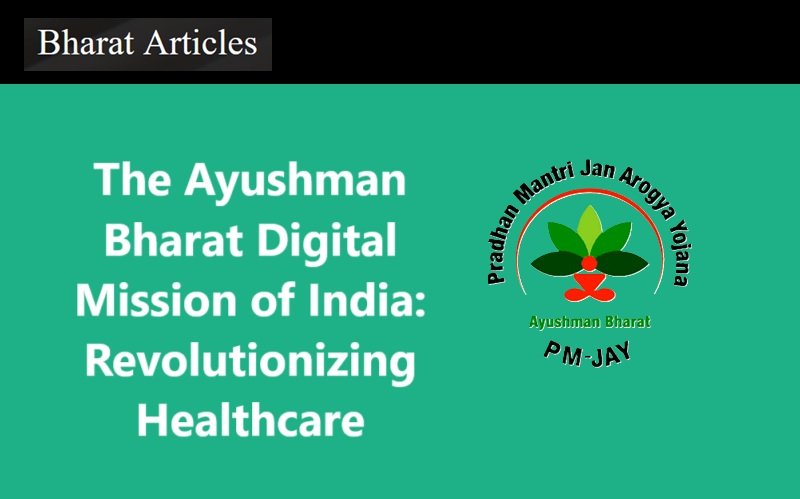
The Ayushman Bharat Digital Mission (ABDM), launched by the Government of India, is a transformative initiative aimed at digitizing the country’s healthcare ecosystem. By integrating various stakeholders, creating a robust digital infrastructure, and empowering individuals with access to their health records, the mission seeks to make healthcare more accessible, affordable, and efficient.
In this article, we delve into the vision, key features, benefits, and challenges of the Ayushman Bharat Digital Mission and its potential to revolutionize healthcare in India.
What is the Ayushman Bharat Digital Mission (ABDM)?
The Ayushman Bharat Digital Mission is a flagship program under the Ministry of Health and Family Welfare (MoHFW). It aims to create a digital health ecosystem that connects patients, healthcare providers, and institutions through a unified digital platform. This mission is part of the broader Ayushman Bharat scheme, which focuses on universal health coverage and affordability.
The ABDM is built on the foundations of interoperable standards, ensuring seamless data exchange across various healthcare systems while maintaining data privacy and security.
Vision and Objectives
- Empowering Individuals:
- Provide individuals with access to their digital health records, enabling informed decision-making.
- Integrated Ecosystem:
- Establish a seamless digital platform connecting healthcare providers, insurers, and patients.
- Enhanced Efficiency:
- Streamline processes like appointments, diagnoses, and claims through digital tools.
- Promote Innovation:
- Encourage the development of healthcare-related digital solutions by creating a robust infrastructure.
Key Features of ABDM
- Health ID:
- A unique 14-digit Health ID is created for every individual, serving as a digital repository for their health records.
- Health Facility Registry (HFR):
- A comprehensive database of healthcare facilities, including hospitals, clinics, labs, and pharmacies.
- Healthcare Professionals Registry (HPR):
- A registry of certified healthcare professionals to ensure standardized and quality care.
- Personal Health Records (PHR):
- Individuals can access, manage, and share their health records digitally.
- Digital Health Infrastructure:
- Interoperable systems that facilitate secure data exchange between stakeholders.
- Telemedicine and e-Pharmacy:
- Integrated platforms for remote consultations and medication delivery.
Benefits of ABDM
- Improved Accessibility:
- Individuals can access their health records anytime, anywhere, ensuring continuity of care.
- Efficiency in Healthcare Delivery:
- Streamlined processes reduce paperwork, saving time and resources for both patients and providers.
- Data-Driven Decision Making:
- Healthcare providers can access comprehensive patient histories, enabling accurate diagnoses and treatments.
- Cost Reduction:
- Digitization minimizes administrative overheads and duplication of tests, lowering healthcare costs.
- Empowered Patients:
- Patients have greater control over their health data, fostering transparency and trust.
- Support for Public Health Programs:
- Aggregated data helps policymakers design targeted public health initiatives.
Implementation Progress
- Pilot Phase:
- The ABDM was initially launched in six Union Territories: Chandigarh, Ladakh, Lakshadweep, Andaman & Nicobar Islands, Dadra & Nagar Haveli, and Daman & Diu.
- Nationwide Rollout:
- Following the success of the pilot phase, the mission is being implemented across all states and Union Territories.
- Partnerships:
- Collaboration with private players, insurance companies, and technology providers is underway to expand the ecosystem.
Challenges and Concerns
- Data Privacy and Security:
- Ensuring the protection of sensitive health data against breaches and misuse.
- Digital Divide:
- Bridging the gap in access to digital tools and internet connectivity, especially in rural areas.
- Standardization:
- Achieving interoperability between various healthcare systems and platforms.
- Awareness and Adoption:
- Educating stakeholders about the benefits of ABDM and encouraging widespread participation.
- Regulatory Framework:
- Establishing robust policies to govern data sharing, consent, and accountability.
The Future of ABDM
The Ayushman Bharat Digital Mission holds immense potential to transform India’s healthcare landscape. Key developments to look forward to include:
- AI-Driven Insights:
- Leveraging artificial intelligence for predictive analytics, personalized care, and epidemic tracking.
- Integration with Health Insurance:
- Seamless claims processing and fraud detection through digital platforms.
- Telehealth Expansion:
- Wider adoption of telemedicine services, bridging the gap in healthcare delivery.
- Global Recognition:
- Positioning India as a leader in digital healthcare innovation.
Conclusion
The Ayushman Bharat Digital Mission is a groundbreaking step towards building a robust, inclusive, and efficient healthcare system in India. By harnessing the power of digital technology, it empowers individuals, enhances healthcare delivery, and supports the government’s vision of universal health coverage. While challenges remain, the mission’s success will depend on collaborative efforts between stakeholders and the government’s commitment to addressing these issues. With continued progress, the ABDM is set to revolutionize healthcare for millions of Indians.
Visit This: https://abdm.gov.in/







